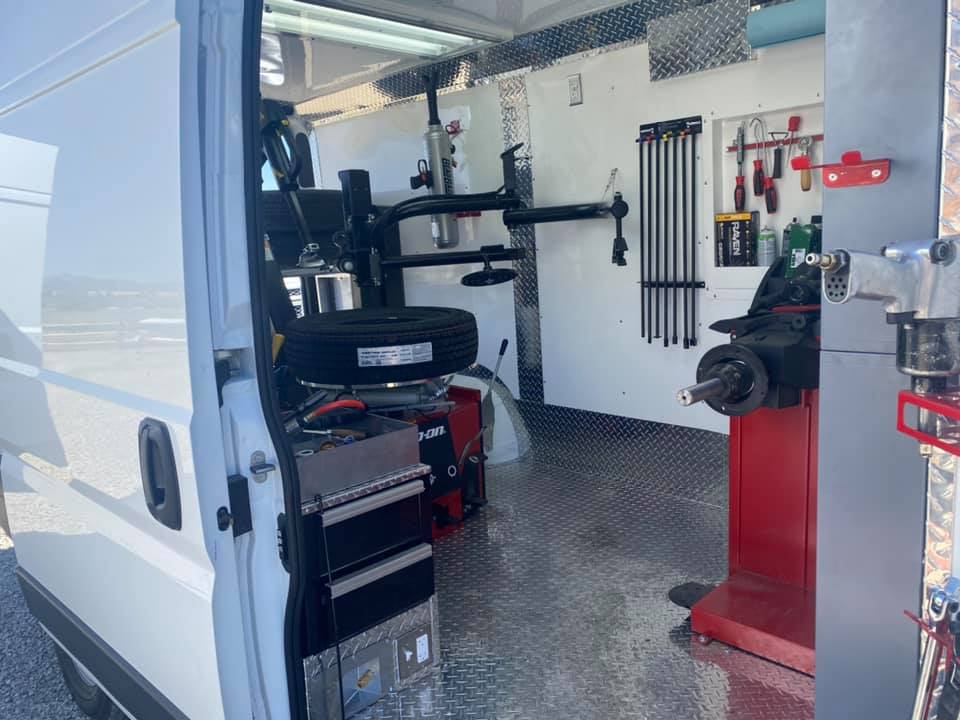Tire Service: Proven Approaches for Optimum Tire Upkeep and Treatment
Maintaining optimal tire condition is paramount for both safety and security and efficiency of any vehicle. From ensuring appropriate tire pressure to normal turning and alignment, there are tried and tested techniques that can significantly prolong the life expectancy of your tires and enhance overall driving experience. As we check out the complexities of tire care and maintenance, we will reveal crucial standards that every vehicle proprietor ought to abide by for the best feasible outcomes. Let's explore the world of tire solution and discover the tricks to maintaining your tires in top-notch form for the lengthy haul.
Importance of Tire Pressure
Ample tire stress advertises better gas efficiency, as under-inflated tires can lead to raised rolling resistance, triggering the engine to work tougher and consume more fuel. Correct tire pressure makes certain also tread wear, improving tire durability and conserving money in the long run by postponing the demand for early substitutes. Regularly readjusting and examining tire pressure, specifically previously long trips, is a straightforward yet efficient way to boost vehicle performance, prolong tire lifespan, and prioritize security on the road.
Tire Rotation Standards
When considering tire turning guidelines, it is crucial to recognize the value of this upkeep job in maximizing tire lifespan and maintaining optimal vehicle efficiency. Tire rotation entails changing the setting of each tire on a car to make certain even step wear. Front tires tend to wear more swiftly than rear tires due to guiding pressures, making routine turning important for balanced wear patterns.

Benefits of Wheel Placement
Ensuring appropriate wheel alignment after tire rotation is essential for maintaining well balanced wear patterns and optimizing lorry performance. Wheel placement describes the modification of the angles of the wheels to the manufacturer's specifications. One of the crucial benefits of wheel placement is boosted taking care of and steering action. When the wheels are effectively straightened, it reduces steering initiative, guaranteeing a smoother and extra regulated driving experience. Furthermore, proper wheel alignment aids to prolong the lifespan of your tires. Misaligned wheels can cause unequal tire wear, resulting in premature tire substitute and raised upkeep prices.

Tire Footstep Depth Examine
Performing a regular assessment of tire walk deepness is necessary for preserving secure driving conditions and lengthening the life-span of your tires. The tread on your tires plays a critical role in providing grip, particularly in damp or unsafe conditions. To check your tire walk deepness, you can use a walk depth gauge or the penny examination. The advised walk deepness goes to least 2/32 of an inch. It is time to change your tires to ensure ideal efficiency and security on the road if the walk deepness is below this threshold. Unequal step wear can indicate problems with tire alignment, pressure, or suspension, highlighting the value of routine walk deepness checks. Disregarding to check and preserve correct walk deepness can result in decreased grip, longer stopping ranges, and a boosted danger of hydroplaning. By including tire walk deepness look into your routine upkeep timetable, you can drive with self-confidence recognizing that your tires remain in top condition.
Seasonal Tire Evaluation
A detailed analysis of tire problem tailored to particular weather condition conditions is important for preserving ideal performance and safety and security throughout the year. Seasonal tire examination is a basic facet of tire maintenance that makes certain tires prepare to face the challenges presented by different climate condition. In prep work for winter months, it is necessary to examine the tire pressure consistently as cold temperatures can cause tire stress to go down. Examining tire step deepness is additionally vital to make sure appropriate grip on snow and frozen roads. Furthermore, looking for signs of damage, such as lumps or fractures, can help protect against prospective tire failings. As the periods Homepage modification, it is necessary to evaluate tire condition and make any essential adjustments to ensure secure driving. By conducting routine seasonal tire examinations, chauffeurs can lengthen tire life-span, enhance fuel performance, and most significantly, make sure a protected driving experience in varying weather - Mobile Tire Replacement Las Vegas.
Conclusion
Finally, keeping correct tire stress, revolving tires regularly, straightening wheels correctly, keeping track of walk depth, and conducting seasonal inspections are vital techniques for ideal tire care. By complying with these shown approaches, drivers can ensure their tires last longer, carry out much better, and add to total lorry security. It is important to prioritize tire upkeep to avoid mishaps, boost fuel performance, and lengthen the lifespan of tires.
Adequate tire pressure promotes much better gas efficiency, as under-inflated tires can lead to boosted rolling resistance, triggering the engine to function more challenging and take in even more gas.When considering tire rotation standards, it is important to recognize the significance of this maintenance job in maximizing tire life-span and preserving optimum lorry performance. Seasonal tire inspection is a fundamental aspect of tire maintenance that ensures tires are all set to encounter the difficulties positioned by different weather condition problems. By performing routine seasonal tire inspections, vehicle drivers can prolong tire life expectancy, enhance gas performance, and most significantly, make sure a safe driving experience in varying weather conditions.
In verdict, maintaining appropriate tire pressure, rotating tires regularly, lining this post up wheels correctly, keeping track of walk deepness, and performing seasonal examinations are necessary methods for optimum tire care.